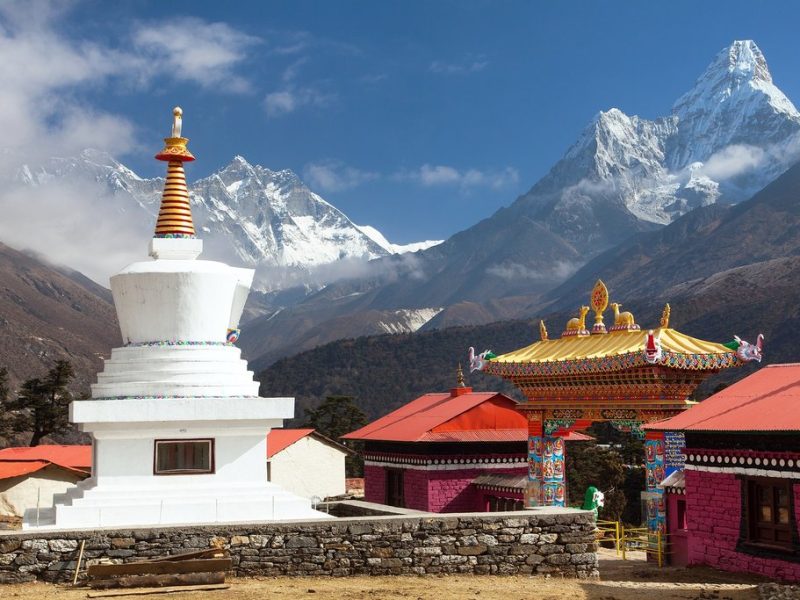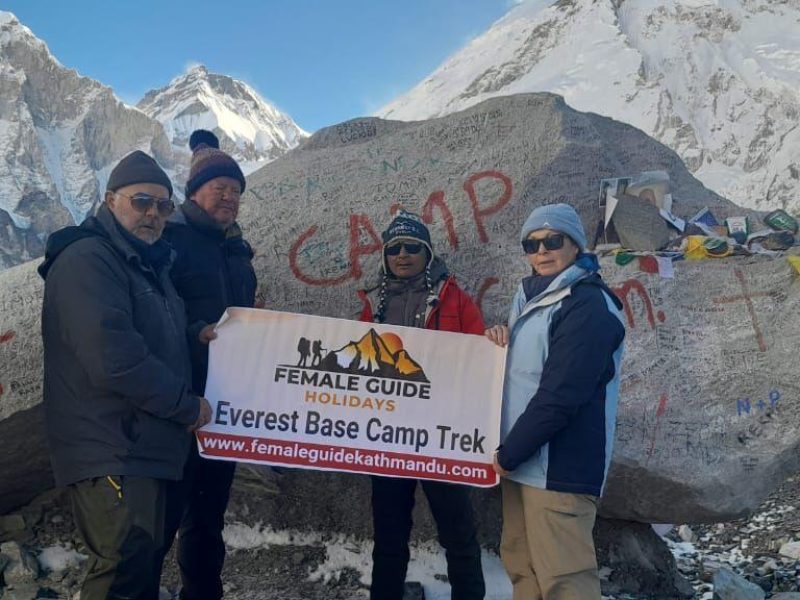Traveling to Everest Region – Everest Region is one of the popular travel destinations for people all around the World. With the highest mountain in the world, Mt. Everest, in Nepal, everyone wants a glimpse of the peak. Therefore, many people head yearly to the Everest Region, mainly to the Everest Base Camp.
Trekking to the Everest Region is challenging. So, you have to keep many things before heading to Everest Region. Especially high altitude makes it harder for people. Since it is a pretty remote and protected location, there are things you must know before traveling to Everest Region. So, let’s go deeper into the article and learn about seven things you must remember while planning your Trip to the Everest Region.
1. Be Aware of Altitude Sickness
Many people disregard Altitude Sickness or don’t care much about it. But Altitude is a real risk when you start climbing up to higher altitudes. Only those who have faced Altitude sickness or seen people with it know how terrifying it can get. So, you need to properly acclimatize and stay fueled and hydrated to lower the chances of getting Altitude Sickness.
Altitude Sickness is mainly caused due to low oxygen levels in the body. The higher you go; the fewer oxygen levels are in the air. So, when you are used to the oxygen level at a much lower altitude at your home, the low oxygen in the Higher altitude can lead to Altitude sickness.
Acute Mountain Sickness (AMS) can be caused by getting to a higher altitude much more quickly without acclimatization. You might experience symptoms like headache, fatigue, nausea, loss of appetite, heavy breathing, and dizziness when you get AMS or Altitude Sickness.
While trekking to higher climates, always stay hydrated, eat, acclimatize, and always carry medicines that might ease your early symptoms during Altitude Sickness.
2. Prepare for Cold and Wet Weather
Before traveling to any destination, you must know the location’s climate and weather. The Everest region’s unpredictable weather makes it pretty different from other trekking areas. The weather in the Everest region is quite cold throughout the year, and as you trek to higher altitudes, the temperature seems to drop with an increase in altitude. Although the weather is quite cold in warmer months, you don’t have to pack excessively with multiple down jackets and body warmer. However, some extra layers are fine.
As we said earlier, the weather is quite unpredictable, so you want to be prepared for rain even during unexpected times. You can get facility of heaters in most lodges to keep yourself warm. Of course, always pack according to the current weather, but you also want to be prepared for some unexpected climate.

3. Hire an Experienced Guide
An experienced guide is always a plus for trekking to a remote and protected area. Having a guide with you makes your trek more hassle-free and fun. You can also get very deep insights into the culture, history, and overall place if you have an experienced guide. If you are trying to have a convenient and exciting trek to the Everest region, hiring a guide or booking a trip from an authorized travel agency is recommended.
With a guide, you don’t have to worry about other hassles. Your guide will deal with all the boring stuff like permits, tickets, accommodation, and other inconveniences you might face on the way. So, you can travel freely, and having a local guide who knows the place well will make your trip much more memorable with all the different insights from the trek.
If you are looking for a reliable guide or a travel agency, Female Guide Kathmandu is always there for you to make your trek exciting, memorable, and, most importantly, hassle-free.
4. Always Carry Extra Cash
While traveling to remote locations, cash is very important. Don’t expect to rely on ATMs or digital payment while traveling to the Everest Region. If you have a guide, consult him about your expenses and the estimated budget. Even after estimating the budget with your guide, you want to have some extra cash with you. If you have booked a package with a travel agency, they will pay for the essentials included in the package. But for other expenses like beverages, chocolates, extra clothes, souvenirs, and different kinds of stuff, you have to pay for it yourself. For Solo travelers or independent travelers, it is recommended you carry extra cash than your budget for the trip.
In such remote areas, you can’t rely on ATMs or Banking cash transactions as there are very limited ATMs and banks. Moreover, even if there are ATMs, they might be under maintenance or have some issues to resolve.
5. Carry Important Documents and Get the Permit Beforehand
Remember your important documents while traveling, especially to a protected area like the Everest Region; you want to have all your essential documents and the required permits with you.
To trek in the Everest Region, you need two permits, TIMS (Trekkers Information Management System) Card and the Sagarmatha National Park entry permit. You can get both permits from the Nepal Tourism Board in Kathmandu. The TIMS is required while trekking in almost all regions in Nepal, and the Sagarmatha National Park permit is the permit for you to enter the National Park area. The total cost of both permits is about $50-60, and if you need clarification about the permits, you can easily get information about them from your guide or the Tourism Board.

6. Prepare yourself Physically and Mentally
Everest Region is one of the most extreme regions in the world, with altitudes ranging from 2800 starting at Lukla, and the Everest Base Camp sits at 5364m. Getting to such a high altitude on your feet isn’t an easy job to do. You will need to get out of your comfort zone and become physically and mentally fit to trek Everest Region without much discomfort. People who don’t have the fitness level or the mentality to face the mountains even quit halfway and return back. You certainly don’t want to be that person. Involve regularly in some form of exercise to increase your fitness level for the trek. A strong mentality is also important as people tend to give up when they start feeling some level of difficulty, even when their body is fully capable of getting to the destination.
7. Pack your Essentials Accordingly
Packing the right gear and having the essentials is a great key for your every trip. Whether for your trek or a road trip, you must pack your stuff accordingly. When trekking to Everest Region, pack as little as possible but ensure you don’t miss any essential items. You don’t want to carry a super heavy bag, which makes your trek even more exhausting, but you also want to ensure you carry the items you will need.
Packing according to the season is also very important. For example, you need to carry warmer clothes during the winter season. But for warmer months, you are better off having just light jackets. It is also recommended to take waterproof clothing during the monsoon season, and you also want to bring enough spare clothing, which you might need when your clothes get wet.
Wrapping it Up
Traveling to the Everest Region comes with many challenges for a newbie. However, if you are smart about your travel plans, your overall trip gets much more convenient and hassle-free. While traveling to the Everest Region, you need to know various things including, Altitude Sickness, hiring a proper guide, getting ready for the weather, carrying extra cash, preparing yourself physically and mentally, packing the essentials, and most important of all, carrying important documents and the required permits.
To help you with the overall aspect of your Everest trip, including the planning, guiding, and making it a memorable trip, Plan your Trip with us!


